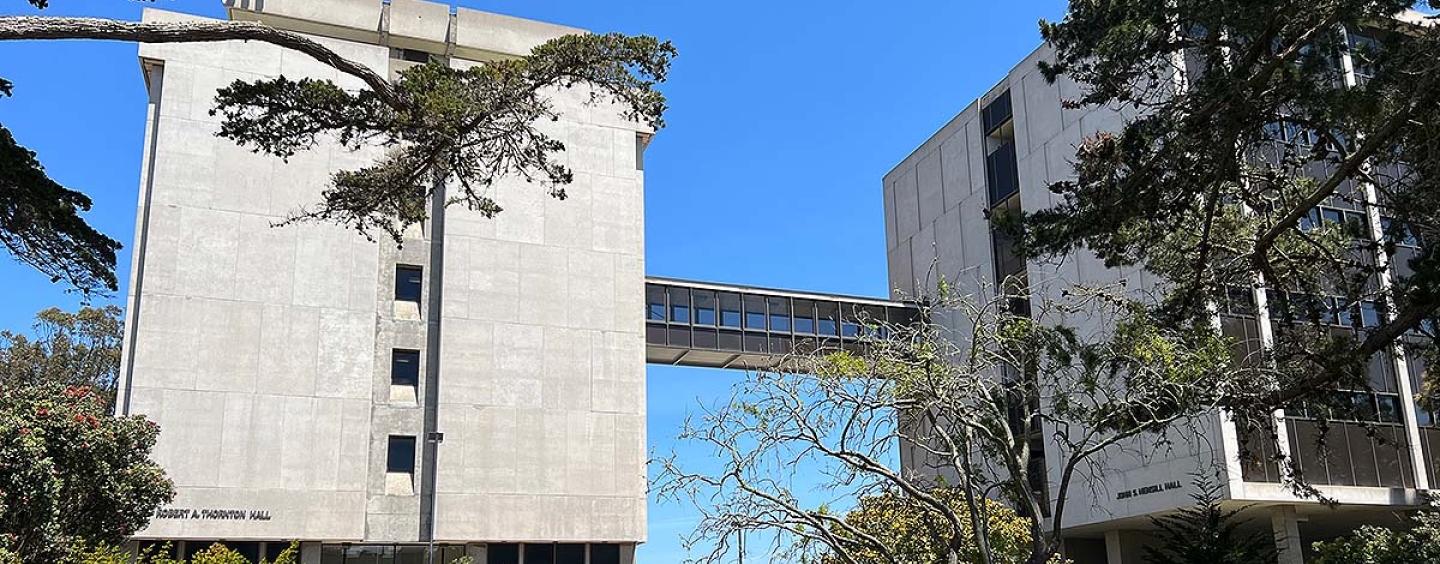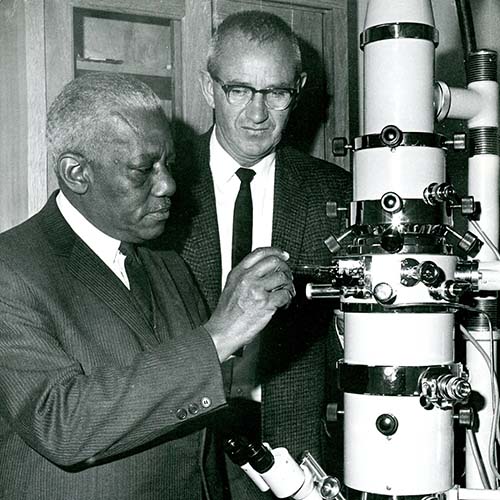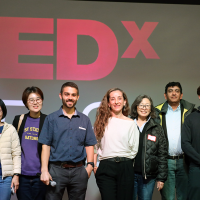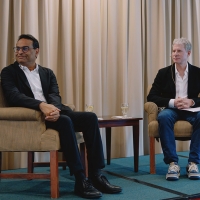Physicist Robert Thornton’s influence lives on in Thornton Hall

SF State’s first Black dean of science was a physicist, educator and pen pals with Albert Einstein
Science is constantly striving to break barriers and challenge old ideas. So it’s apropos that one of the main science buildings on the San Francisco State University campus, Thornton Hall, is named for an individual who broke barriers as a science educator.
The nine-story building was named after physicist Robert Ambrose Thornton (1897 – 1982), the first dean of San Francisco State’s School of Natural Science in 1964 and the first Black faculty member to become a dean of science at the University. The building was built in 1972 and renamed after Thornton in 1981 at President Paul F. Romberg’s request. From his childhood to his work with Albert Einstein, Thornton was a force for science and education.
“Students today are asking us to change our rigid, orthodox views in order to implement the traditional values on which we say a democracy is based. I'm all for it. These dissidents of today could save America if we'd listen to them and work with them," Thornton told Pat Pierard in a 1967 interview for the The Daily Gator.
Thornton joined SF State in 1956 as a Physics professor with an expertise in theoretical mechanics and astrodynamics. In 1963, he was the first Black faculty appointed chairman of the Division of Natural Sciences and became dean of the School of Natural Science (later School of Science) the following year. He retired from SF State in 1969.
SF State was only one of the schools impacted by Thornton’s indelible influence. A physicist, educator and administrator, Thornton had a 65-year-long career that included stints at several colleges and universities, including three historically Black universities (Shaw University, Johnson C. Smith University and Talladega College), Kittrell College, University of Puerto Rico, University of Chicago, Brandeis University, Dillard University and Fisk University. Even after retiring, he continued teaching at the University of San Francisco.
As for his own formal education, Thornton earned a B.S. in Mathematics and Physics from Howard University in 1922, an M.S. from Ohio State University and a Ph.D. in 1946 from the University of Minnesota. During this time, he had already begun teaching and earning his reputation as an educator … and Albert Einstein’s pen pal.
In 1944, Thornton joined the University of Puerto Rico to establish a liberal arts curriculum in the engineering school. Aiming to create a program that incorporated the philosophical side of science, he reached out to respected scientists to gain support for his approach. One hopeful letter to Einstein led to a nine-year correspondence and several in-person visits.
Born in Houston, Texas, Thornton developed his thirst for knowledge at a young age. His mother worked as a midwife in affluent white homes, and Thornton would often accompany her to work. The experience allotted him opportunities to roam clients’ libraries and absorb new knowledge and ideas.
Thornton considered pursing the arts. He was a bass singer who was offered an audition for the musical “Shuffle Along,” a Broadway hit that inspired new interest in Black musicals and theatre. Though he ultimately pursued a career in science and education, Thornton saw creativity in the sciences.

Robert Thornton (Physical Sciences, left) and John Hensill (Natural Sciences, right).
Photo courtesy of the University Archives.
“Many people do not realize that scientists use the same type of imagination, intuition, idealization, and value judgements that the poet does,” Thornton told Pierard in the 1967 interview in The Daily Gator.
Learn more about the College of Science & Engineering and the new Science & Engineering Innovation Center, SF State’s first new science building in nearly 50 years.
Special thanks to University Archivist Meredith Eliassen for her assistance with this article.
Tags



